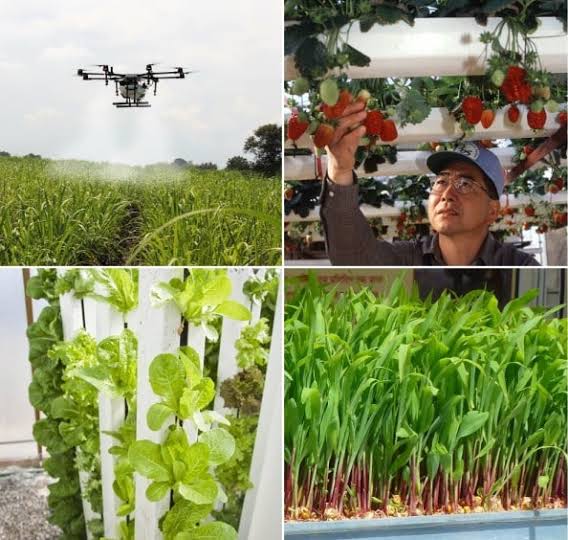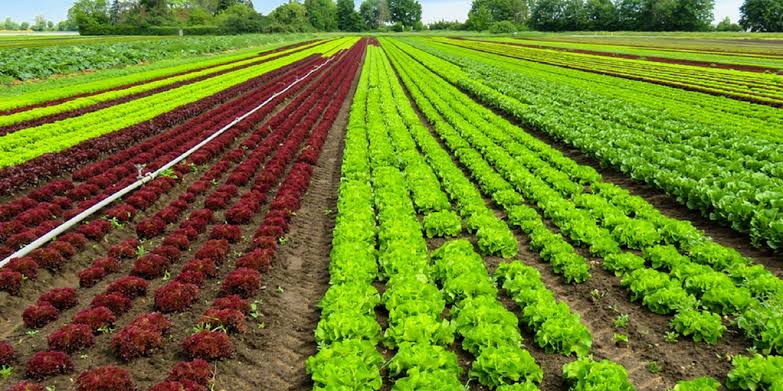There are different ways of farming systems, talking about farming, farming plays a crucial role in providing food for our growing global population. In recent years, various farming techniques have evolved to enhance productivity and sustainability. Farmers worldwide employ diverse methods to cultivate crops and raise livestock.
Farming, at its core, is the intentional cultivation of plants and animals for sustenance, commercial purposes, or both. It involves various activities such as planting, tending to crops or livestock, and harvesting. Beyond providing food and raw materials, farming also supports rural economies and helps maintain ecological balance.
A striking aspect of farming is its ability to adapt to different environments and climates. Techniques like hydroponics and organic farming showcase innovative approaches that minimize environmental impact while maximizing productivity. Additionally, advancements in technology have revolutionized farming with precision agriculture methods that optimize resources for higher yields.
One cannot overlook the social cohesion that emerges from farming communities – a strong sense of community can develop through shared knowledge and support networks among farmers. As consumers become more conscious of their food sources, understanding the complexities of modern farming practices becomes paramount in appreciating the grueling yet rewarding work undertaken by those involved in agriculture.
Traditional farming involves the use of conventional practices passed down through generations. This includes plowing the land, sowing seeds, and relying on natural precipitation. However, modern agriculture has witnessed a shift towards more advanced techniques to meet the demands of an increasing population and address environmental concerns.
One notable advancement is precision farming, which utilizes technology to optimize the use of resources. Farmers employ GPS-guided tractors and drones to monitor crop conditions and apply fertilizers and pesticides with precision. This not only improves efficiency but also minimizes the environmental impact of farming activities.
Agroforestry is another sustainable farming technique gaining popularity. It integrates trees and shrubs into traditional agricultural systems, providing multiple benefits. Trees contribute to soil health, prevent erosion, and offer shade to crops. This approach fosters biodiversity and promotes long-term sustainability.
Hydroponics and aquaponics represent innovative methods of soilless farming. In hydroponics, plants grow in nutrient-rich water solutions, while aquaponics combines aquaculture (fish farming) with hydroponics. These techniques conserve water, reduce the need for arable land, and allow for year-round cultivation.
Organic farming emphasizes the use of natural fertilizers and pest control methods, avoiding synthetic chemicals. This approach promotes soil health and biodiversity while producing crops free from synthetic residues. Consumers increasingly appreciate the environmental and health benefits associated with organically grown produce.
Vertical farming takes agriculture to new heights—literally. This method involves cultivating crops in vertically stacked layers, often in controlled indoor environments. By maximizing space and utilizing artificial lighting, vertical farming can produce crops efficiently and reduce the need for vast expanses of land.
Cover cropping is a traditional practice that has gained renewed attention for its soil conservation benefits. Farmers plant cover crops, such as legumes or grasses, during periods when the main crop is not growing. These cover crops prevent soil erosion, enhance soil fertility, and contribute to a more sustainable farming system.
Integrated pest management (IPM) is an eco-friendly approach to pest control that combines biological, cultural, and mechanical methods. By promoting natural predators and using crop rotation, farmers can reduce reliance on chemical pesticides, minimizing environmental harm and preserving ecosystem balance.
The landscape of farming is continually evolving as farmers embrace new techniques to meet the challenges of a changing world. From precision farming and agroforestry to hydroponics and organic practices, these diverse approaches contribute to a more sustainable and resilient agricultural sector. As technology continues to advance, the future holds promise for even more innovative and environmentally friendly farming techniques.
Read Also: A Guide to Growing and Caring for Ophiopogon Grass (Mondo Grass)
The Different Ways of Farming

Farming encompasses a variety of methods tailored to different crops, climates, and goals. Traditional and modern farming techniques coexist, each with its unique characteristics.
1. Traditional Farming: Traditional farming involves time-tested practices passed down through generations. It often includes plowing the land, sowing seeds, and relying on natural rainfall for irrigation. This method varies across cultures and regions, reflecting local agricultural traditions.
2. Organic Farming: Organic farming eschews synthetic fertilizers and pesticides, emphasizing natural alternatives to maintain soil fertility and control pests. It relies on crop rotation, composting, and companion planting to promote ecological balance and produce crops without synthetic residues.
3. Precision Farming: Precision farming utilizes technology like GPS, drones, and sensors to optimize resource use. Farmers can precisely apply fertilizers, pesticides, and water, reducing waste and enhancing efficiency. This method maximizes yields while minimizing environmental impact.
4. Hydroponics: Hydroponic farming involves growing plants without soil, instead using nutrient-rich water solutions. This method is highly controlled, allowing for efficient resource use, faster growth, and the ability to cultivate crops in urban environments or areas with poor soil quality.
5. Aquaponics: Combining aquaculture with hydroponics, aquaponics creates a symbiotic system where fish waste provides nutrients for plants, and the plants filter and purify the water for the fish. This integrated approach conserves water and creates a sustainable ecosystem.
6. Vertical Farming: Vertical farming stacks crops in layers, often in indoor environments with controlled conditions. By maximizing vertical space, this technique reduces the need for extensive land, making it suitable for urban areas. Artificial lighting supports year-round cultivation.
7. Agroforestry: Agroforestry integrates trees and shrubs into traditional farming systems. This approach enhances biodiversity, prevents soil erosion, and provides additional benefits such as shade for crops. Trees contribute to soil health and create a more resilient agricultural ecosystem.
8. Conservation Farming: Conservation farming focuses on sustainable practices to protect soil health. Techniques include minimal tillage, cover cropping, and contour plowing, all aimed at reducing soil erosion, improving water retention, and maintaining long-term soil fertility.
9. Integrated Pest Management (IPM): IPM combines biological, cultural, and mechanical methods for pest control. By promoting natural predators, rotating crops, and using targeted interventions, farmers reduce reliance on chemical pesticides, minimizing environmental impact.
10. Sustainable Farming: Sustainable farming encompasses a holistic approach to agriculture that considers environmental, social, and economic factors. It aims to meet present needs without compromising the ability of future generations to meet their own needs.
In the dynamic landscape of agriculture, farmers often combine elements of these various methods, adapting their approach based on local conditions, available resources, and their goals for sustainable and productive farming.
Traditional Farming Practices
In the tapestry of agriculture, traditional farming practices weave a rich history that sustains communities and connects generations. These age-old methods, rooted in simplicity, hold the wisdom of our ancestors who tilled the land with reverence.
In traditional farming, the rhythm of nature guides the farmer’s hand. The cycle of seasons dictates the sowing and harvesting, creating a dance with the Earth. This harmony is palpable in the careful selection of crops that have adapted to local climates over centuries, creating resilient ecosystems.
Hand-in-hand with nature, traditional farmers often rely on organic techniques. Natural fertilizers like compost and animal manure enrich the soil, promoting fertility without the need for synthetic chemicals. This gentle approach not only nurtures the land but also ensures the production of wholesome, untainted produce.
Crop diversity is a hallmark of traditional farming. Instead of monoculture, where a single crop dominates vast expanses, traditional farmers embrace polyculture, planting a variety of crops side by side. This not only minimizes the risk of crop failure but also fosters biodiversity, supporting a web of life that extends beyond the fields.
Water management, another vital aspect of traditional farming, often involves time-tested techniques such as rainwater harvesting and efficient irrigation systems. These methods not only conserve water but also acknowledge the intricate balance between human needs and environmental sustainability.
Livestock plays a crucial role in traditional farming systems. Animals provide more than just meat and dairy; they contribute to soil fertility through their manure, assist in plowing fields, and serve as a diversified source of income. The symbiotic relationship between crops and livestock mirrors the interconnectedness of traditional farming practices.
Farmers, in tune with their surroundings, often follow traditional calendars and celestial cues to plan their activities. This attunement to natural rhythms reflects a deep respect for the land and a recognition of the interconnectedness of all living things.
The communal aspect of traditional farming is noteworthy. It goes beyond individual endeavors, with communities coming together for collective tasks like planting and harvesting. This cooperative spirit not only lightens the workload but also fosters a sense of unity and shared responsibility.
Despite the encroachment of modern agricultural practices, traditional farming endures as a testament to sustainability and resilience. It whispers the importance of preserving cultural heritage, respecting the environment, and embracing a holistic approach to agriculture.
In the embrace of traditional farming practices, there is a timeless wisdom that transcends generations. It beckons us to listen to the land, learn from the past, and tread lightly as stewards of the Earth. As we navigate the complexities of the modern world, the echoes of traditional farming remind us that our connection to the land is both a responsibility and a source of profound sustenance.
Read Also: A Guide to Growing and Caring for Cortaderia Grass (Cortaderia Selloana)
Guide to Practical and Effective Simple Farming

Embarking on the journey of simple farming offers a rewarding connection to the earth, fostering self-sufficiency and a closer relationship with the food we eat. Here’s a straightforward guide to help you get started on your own simple farming adventure.
1. Choose Your Space: Find a suitable plot for your farm. It could be a backyard, a small piece of land, or even containers on a balcony. Ensure it receives adequate sunlight for plant growth.
2. Soil Preparation: Test and amend your soil if needed. Most crops thrive in well-draining soil rich in organic matter. Compost and organic fertilizers can be excellent additions to enhance soil fertility.
3. Select Your Crops: Choose crops that are well-suited to your local climate and growing conditions. Start with a few easy-to-grow varieties like tomatoes, lettuce, or herbs to build confidence.
4. Plan Your Layout: Organize your crops efficiently. Consider factors like plant height, sun exposure, and water requirements. Companion planting can also be beneficial to deter pests and enhance growth.
5. Watering: Establish a regular watering schedule, ensuring plants receive adequate moisture. Be mindful not to overwater, as this can lead to root rot. Drip irrigation or soaker hoses are efficient methods.
6. Natural Pest Control: Embrace natural pest control methods. Companion planting, attracting beneficial insects, and using neem oil or soap solutions can help manage pests without resorting to harsh chemicals.
7. Composting: Start a compost pile to recycle kitchen scraps and green waste. This nutrient-rich compost can be used to fertilize your plants, completing a sustainable cycle on your farm.
8. Harvesting: Learn when to harvest your crops for optimal taste and nutrition. Regular harvesting promotes continuous growth. Use pruning shears or scissors for a clean cut.
9. Rotate Crops: Practice crop rotation to prevent soil-borne diseases and maintain soil health. Avoid planting the same crop in the same spot consecutively.
10. Learn and Adapt: Stay curious and continuously learn about gardening. Observe your plants, take note of successes and challenges, and adapt your approach accordingly.
11. Share the Bounty: If your harvest is abundant, consider sharing with friends, family, or neighbors. It fosters a sense of community and reduces waste.
12. Enjoy the Process: Simple farming is not just about the end result; it’s about enjoying the process. Take time to appreciate the growth of your plants and the satisfaction of cultivating your own food.
Remember, the journey of simple farming is a gradual learning experience. Start small, be patient, and let the joy of nurturing life unfold as you cultivate your little piece of the earth.
Read Also: DIY Christmas Cards: Unleashing Your Festive Creativity
